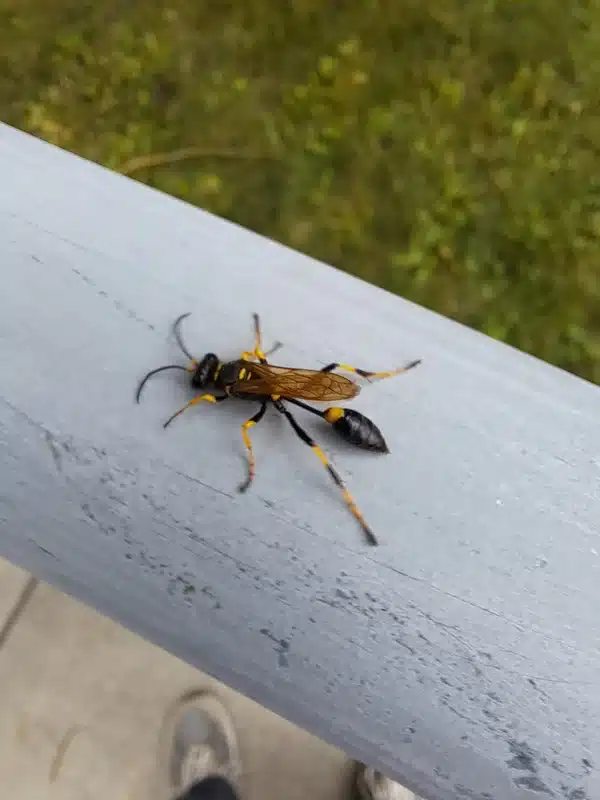When you spot a winged insect building mud structures around your home, you might wonder if you’re dealing with an aggressive wasp or something more harmless. The good news is that mud daubers are actually a type of wasp, but they’re completely different from the aggressive social wasps most people worry about. Understanding the difference between mud daubers and other wasps can save you unnecessary concern and help you make better decisions about your home’s pest management.
In my four years as a registered technician, I’ve encountered countless mud dauber nests in garages, under eaves, and on the sides of homes throughout the DMV area. What I always tell homeowners is that these particular wasps are among the least problematic insects you’ll find around your property.
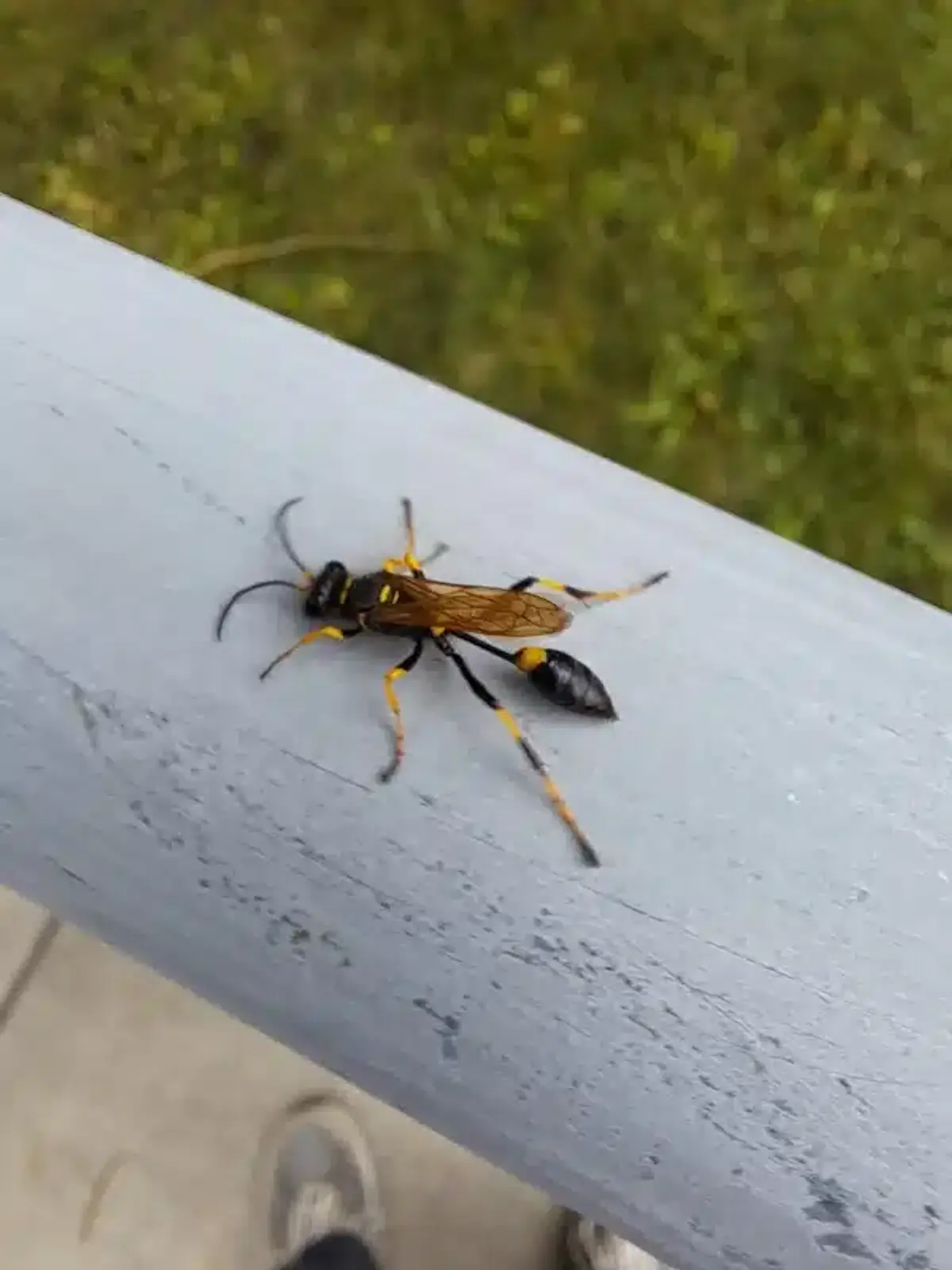
What Makes Mud Daubers Different from Other Wasps
The key difference between mud daubers and other wasps lies in their social structure. While yellow jackets and paper wasps live in colonies with queens and workers, mud daubers are completely solitary. Each female builds and maintains her own nest without any help or social hierarchy.
This solitary nature is exactly why mud daubers rarely sting. Unlike yellowjackets or bald-faced hornets that aggressively defend their colonies, mud daubers have no community to protect.
What does the science say?
According to Purdue University Extension research, mud daubers “very rarely sting, and then only if mishandled.” Their comprehensive study on solitary wasps confirms that aggressive behavior is virtually absent in these species.
The University of Florida’s entomology research details their complete life cycle, noting that adults overwinter as prepupae in their cells, emerging the following spring. This research confirms that each nest is active for only one season, making them much less problematic than colonial wasps.
Physical Features: How to Identify a Mud Dauber
Mud daubers have several distinctive physical characteristics that make them easy to identify. Most notably, they have an extremely narrow “thread waist” that connects their thorax and abdomen. This waist is much more pronounced than what you’ll see on other wasp species.
Their bodies are long and slender, typically measuring between half an inch to one inch in length. In our area, you’ll commonly encounter three species:
- Black-and-yellow mud dauber - Features bright yellow markings on a black body
- Organ-pipe mud dauber - Completely black with a shiny appearance
- Blue mud dauber - Metallic blue coloration that’s quite striking
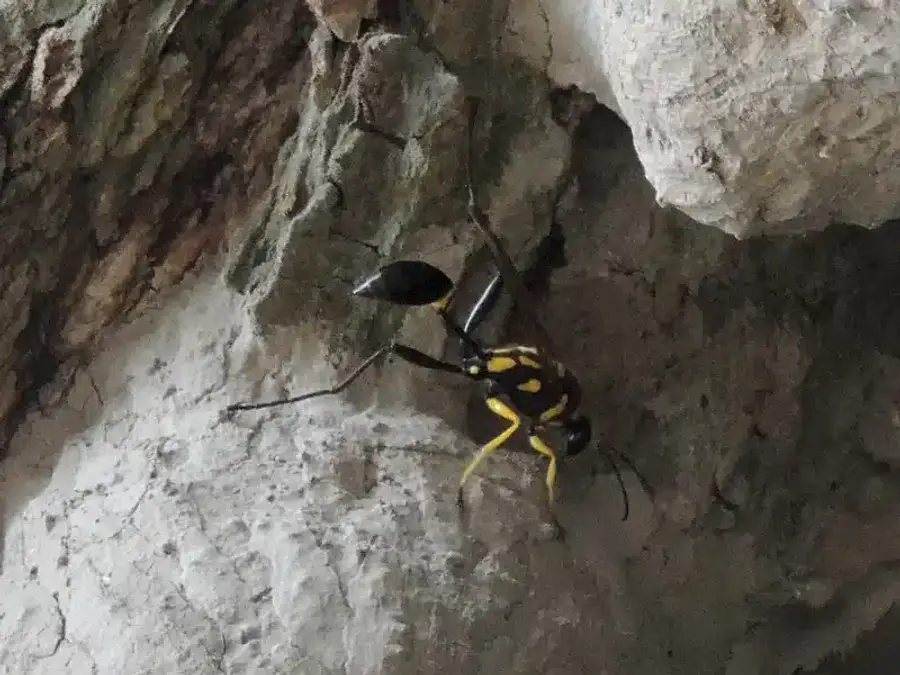

Comparison: Mud Dauber vs Aggressive Wasps
| Mud Daubers | Aggressive Wasps | |
|---|---|---|
| Social Structure | Solitary | Colonial |
| Sting Risk | Rarely sting | Aggressive stinging |
| Nest Material | Mud/clay | Paper pulp |
| Nest Size | Small tubes | Large colonies |
| Pest Control | Beneficial (eat spiders) | Problematic |
Mud Nests vs Paper Nests: A Clear Distinction
One of the easiest ways to distinguish mud daubers from other wasps is by examining their nests. While paper wasps create papery nests from chewed wood pulp, mud daubers construct their homes entirely from mud.
These mud nests appear as small tubes or chambers, often resembling organ pipes when built by the organ-pipe mud dauber. The female makes 20-40 trips to collect mud for each cell, using moisture from her body to shape the material. The construction process is fascinating-she vibrates her flight muscles to keep the mud workable while building.
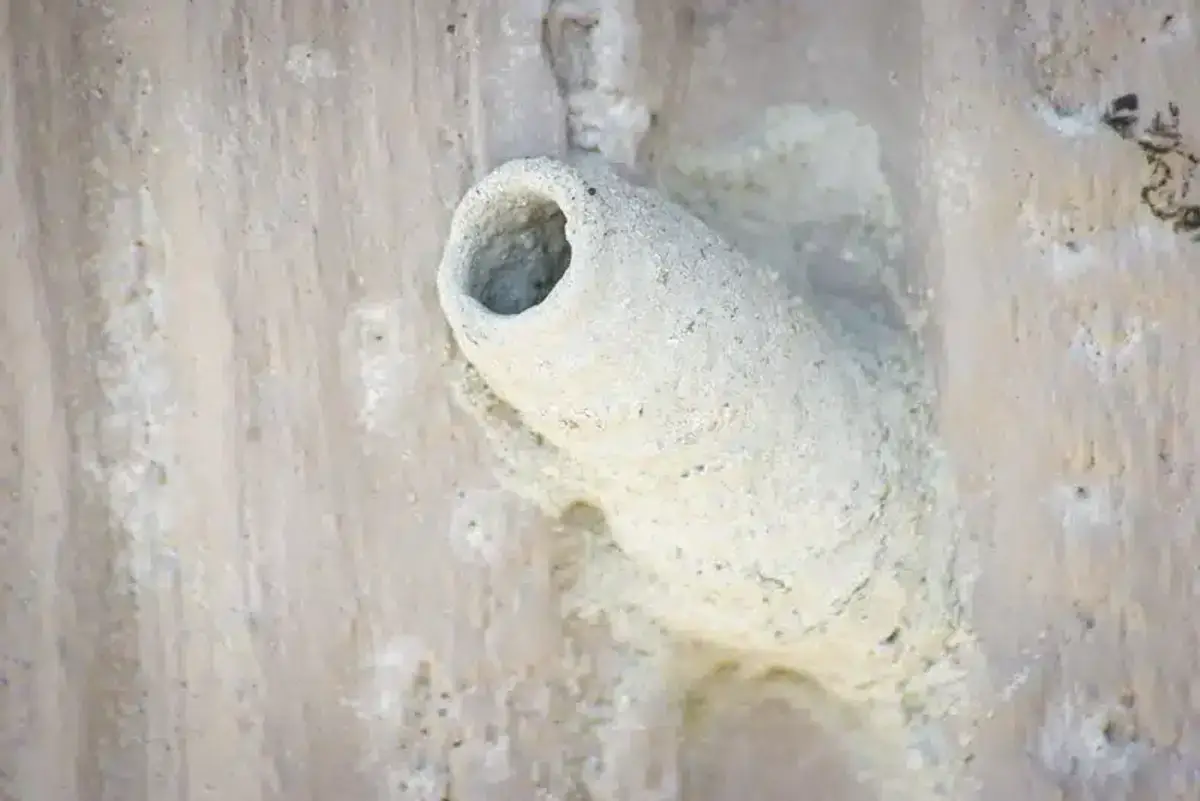
Where You’ll Find Mud Dauber Nests
Mud daubers prefer sheltered locations that protect their nests from rain and direct sunlight. In my experience servicing homes across the DMV, I most commonly find these nests:
- Under roof eaves and overhangs
- In open garages and sheds
- On porch ceilings and covered patios
- Inside unused equipment or machinery
- Along exterior walls in protected corners
The nests are typically small-much smaller than the large paper nests created by social wasps. Each nest contains only a few cells where the female stores paralyzed spiders for her developing larvae.
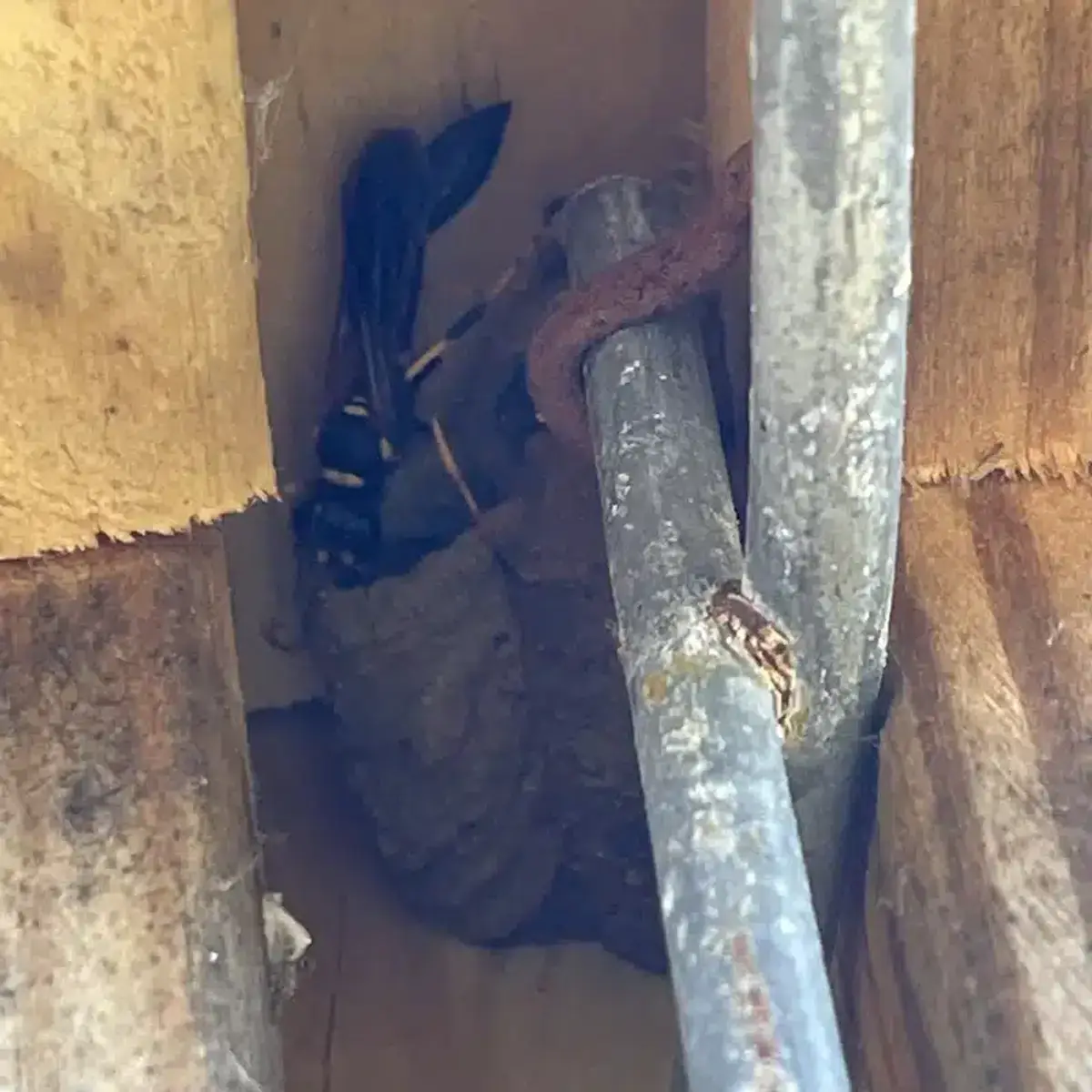
The Beneficial Side of Mud Daubers
Here’s something that might surprise you: mud daubers are actually beneficial insects that help control pest populations around your home. These wasps are specialized spider hunters, and they’re remarkably good at their job.
Each mud dauber nest cell is packed with up to 25 paralyzed spiders that serve as food for developing larvae. This includes some spiders that homeowners definitely don’t want around, including black widow spiders. The adult mud dauber paralyzes the spider with her sting but keeps it alive, ensuring fresh food for her offspring.
Additionally, adult mud daubers feed on nectar, making them occasional pollinators. Unlike aggressive social wasps that can disrupt outdoor activities, mud daubers quietly go about their business without bothering people.
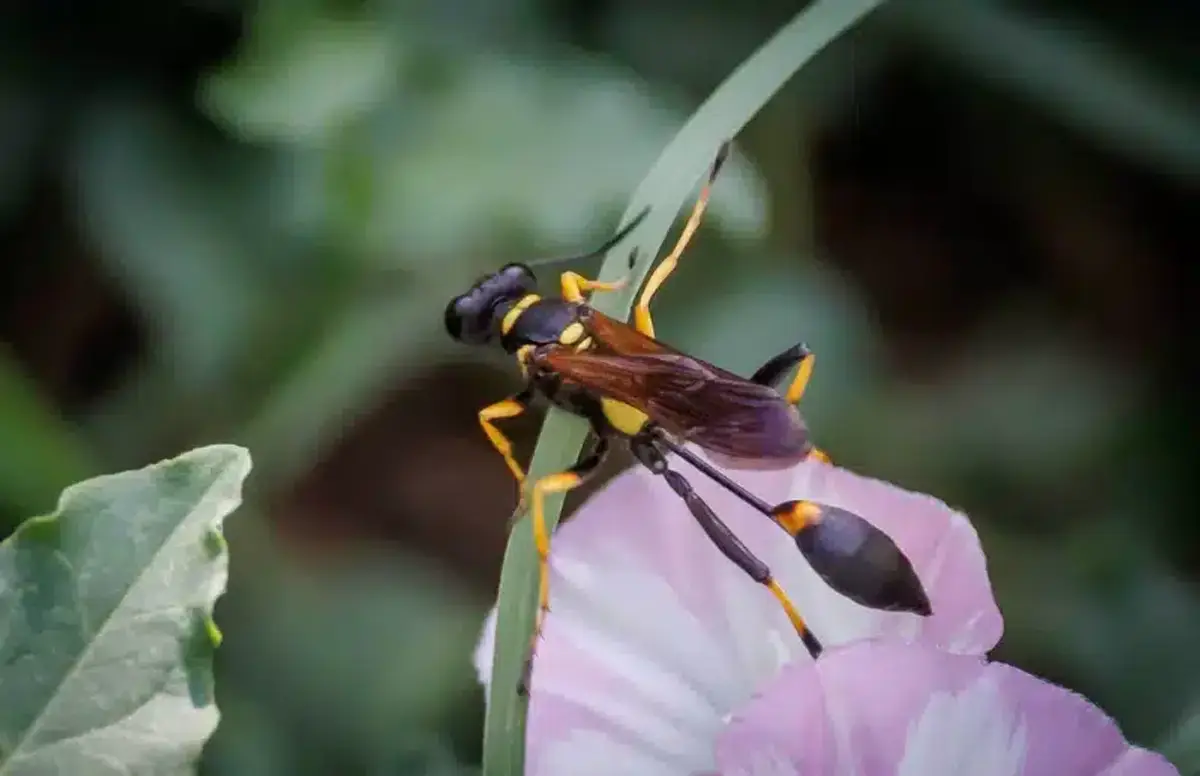
Life Cycle and Seasonal Activity
Understanding the mud dauber life cycle helps explain why these wasps are so much less problematic than social species. The cycle begins in late spring when adult females emerge and begin building nests.
After constructing a mud cell, the female hunts spiders to stock it with food. She lays a single egg in each cell, then seals it with mud. The larvae develop through summer, feeding on the stored spiders. By fall, most adults have emerged, leaving behind empty nests with characteristic round exit holes.
According to University of Florida research, the insects overwinter as prepupae in their cells, emerging the following spring to start the cycle again. This means each nest is typically active for only one season.
Why Mud Daubers Are Less Problematic Than Other Wasps
In our family business’s 50+ years serving the DMV area, we’ve seen how different wasp species affect homeowners. Mud daubers consistently rank as the least concerning for several important reasons:
When a Panicked Call Led to an Educational Moment
Last summer, I received an urgent call from a homeowner in Arlington who discovered what she thought was a “massive wasp infestation” in her garage. When I arrived, I found over a dozen mud dauber nests attached to the garage ceiling - the most I’d seen in one location.
- Initial concern: Homeowner feared aggressive wasps near children’s play area
- What we found: Multiple inactive nests with characteristic exit holes
- The revelation: No adult wasps present, all nests had completed their seasonal cycle
- Bonus discovery: Garage had virtually no spider problems compared to neighboring homes
This experience perfectly demonstrated how mud daubers work quietly behind the scenes, providing natural pest control without the homeowner ever noticing their beneficial activity.
Minimal Aggression
Because mud daubers don’t have a colony to defend, they show virtually no territorial behavior. You can often work near their nests without any aggressive response from the wasp.
Size and Scope
Mud dauber nests remain small and don’t expand like social wasp colonies. There’s no risk of discovering a massive nest that’s been growing all season.
No Structural Damage
Unlike some other wasps that chew wood or expand into wall cavities, mud daubers simply attach their small nests to existing surfaces without causing damage.
Pest Control Benefits
The spider control provided by mud daubers often outweighs any minor inconvenience their presence might cause. This is especially valuable for homeowners dealing with spider issues.
When Mud Dauber Removal Makes Sense
Despite their beneficial nature, there are situations where mud dauber nest removal becomes necessary. Based on my experience, I typically recommend removal when:
- Nests are located in highly visible areas where appearance matters
- Someone in the household has a severe wasp allergy
- Nests interfere with equipment operation or maintenance
- Multiple nests create an aesthetic concern
However, I always encourage homeowners to consider the benefits before deciding on removal. These wasps cause no structural damage and provide valuable pest control services that you’d otherwise need to address through other methods.
How to Get Rid of Wasps Safely: Gentle Removal Methods
When removal is necessary, timing and technique matter significantly. The best time for nest removal is during late fall or winter after adults have emerged. You can identify inactive nests by looking for round exit holes in the mud.
For inactive nests, removal is straightforward. Simply use a putty knife or similar tool to scrape the dried mud from the surface. Clean the area thoroughly to remove any residual mud that might attract future nesting.
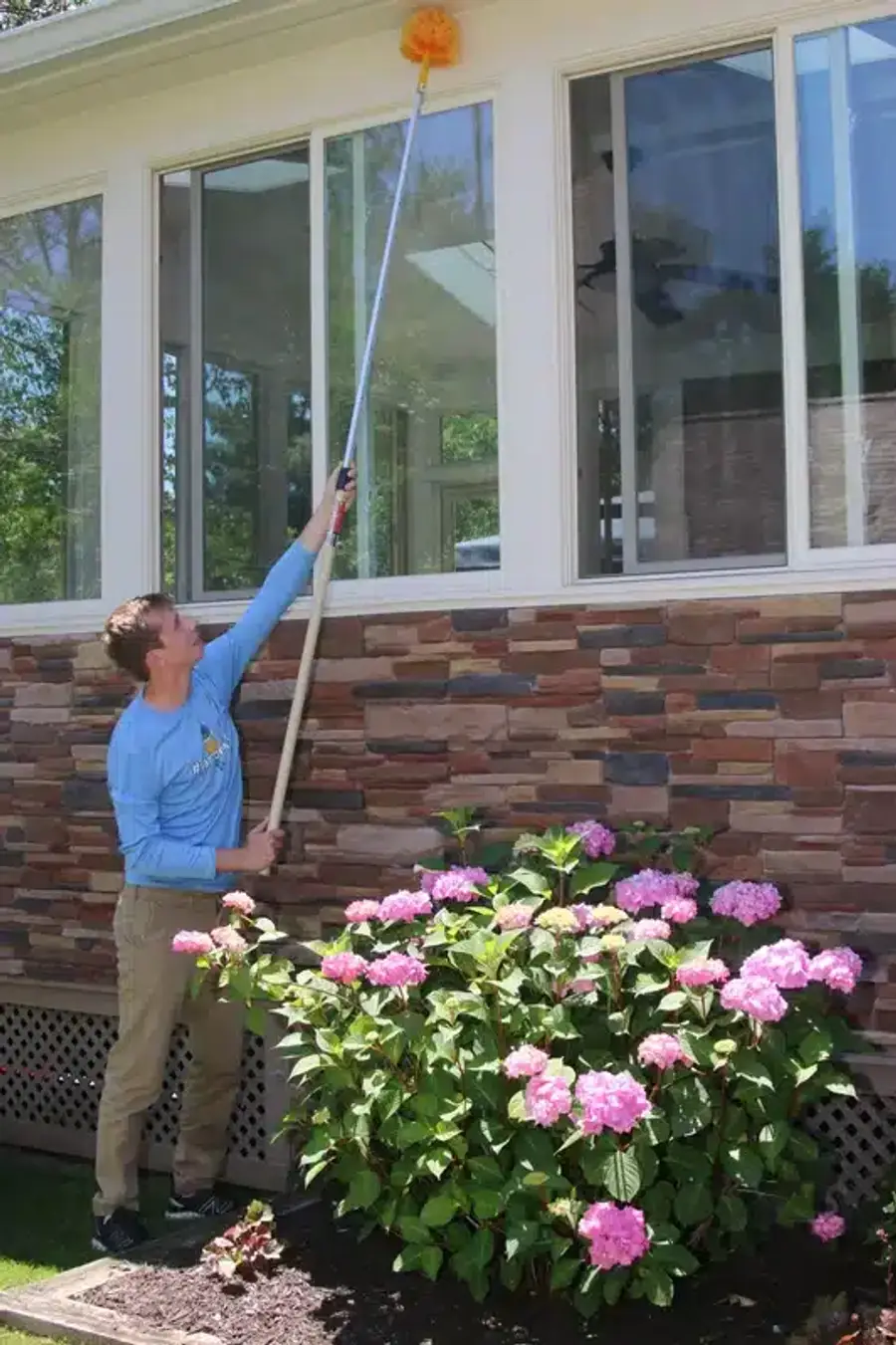
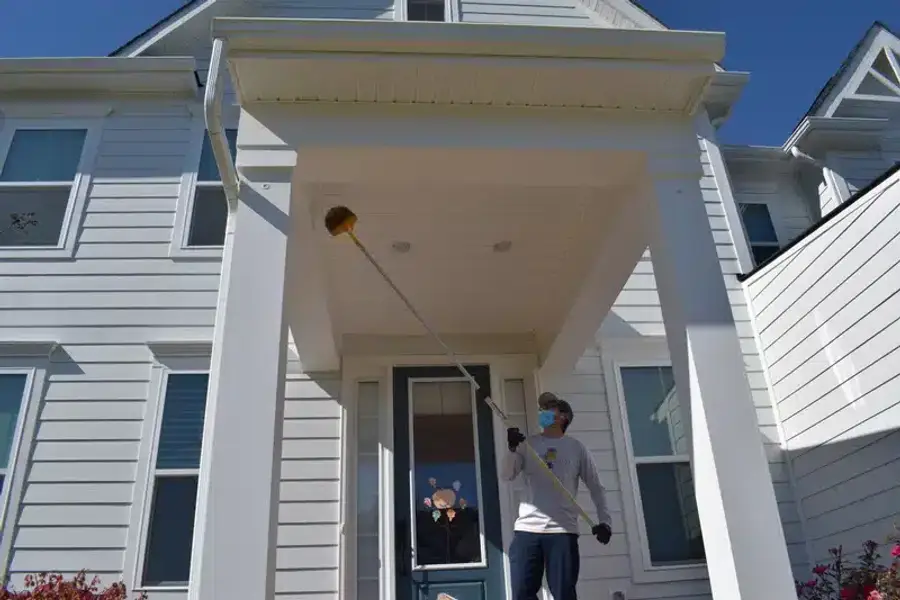
For active nests that require immediate attention, I recommend professional removal. Our technicians use targeted approaches that minimize impact on these beneficial insects while addressing homeowner concerns.
Prevention Strategies
If you prefer to discourage mud dauber nesting without harming existing beneficial insects, focus on habitat modification rather than chemical treatments.
Since mud daubers hunt spiders, reducing spider populations naturally decreases mud dauber activity. Regular web removal, sealing entry points, and addressing moisture issues all help control spider numbers. According to Clemson University extension research, these environmental modifications prove more effective long-term than pesticide applications.
Additionally, keeping garage doors closed during peak nesting season (late spring) and screening vents can reduce available nesting sites without impacting the wasps’ beneficial hunting activities elsewhere on your property.
Essential Pest Prevention Steps
- Spider Habitat Control: Regular web removal and sealing entry points reduces mud dauber attraction naturally.
- Moisture Management: Address leaks and drainage issues that attract both spiders and mud sources.
- Seasonal Awareness: Close garage doors during late spring when female mud daubers scout for nesting sites.
- Natural Balance: Consider the beneficial spider control before removing established nests.
Common Misconceptions About Mud Dauber vs Wasp Identification
Many homeowners initially fear mud daubers because they assume all wasps behave like the aggressive social species they’ve encountered before. This misconception leads to unnecessary concern and sometimes harmful overreaction.
Another common confusion involves nest identification. Some people mistake mud dauber nests for the beginning stages of paper wasp construction. However, paper wasp nests are always papery and gray, while mud dauber nests are clearly made of hardened mud or clay.
Finally, many assume that the presence of any wasp nest indicates an aggressive insect problem. With mud daubers, the opposite is often true - their presence indicates effective natural pest control that benefits your property.
Professional Assessment and Treatment
When dealing with any stinging insect concern, proper identification remains crucial. Our registered technicians regularly encounter situations where homeowners have correctly identified mud daubers but want professional confirmation before making decisions about removal.
We’ve found that education often proves more valuable than treatment when it comes to mud daubers. Understanding their beneficial role and non-aggressive nature helps homeowners make informed decisions that balance aesthetics with natural pest control.
For homes in areas like Arlington and throughout the DMV, mud daubers represent one component of a balanced ecosystem that includes various spider species and other insects. Working with these natural relationships often proves more effective than fighting against them.
If you’re dealing with mud daubers around your home and want professional guidance on whether removal is necessary, our team can help you evaluate the situation. We’ll identify the specific species, assess the location and activity level, and recommend the most appropriate approach based on your specific circumstances.
Call us at 703-683-2000 or email info@bettertermite.com. Our registered technicians can help you understand exactly what you’re dealing with and determine the best course of action for your situation.
Frequently Asked Questions
Here are the most common questions homeowners ask when they spot mud daubers near their homes.
Are mud daubers dangerous to humans?
+
Mud daubers are not dangerous to humans. They rarely sting and are not aggressive because they're solitary wasps with no colony to defend. They only sting if directly handled or trapped against skin.
How can I tell if a mud dauber nest is active?
+
Active nests appear freshly constructed with smooth mud surfaces and no holes. Inactive nests show round exit holes where adult wasps have emerged, and the mud often looks weathered or cracked.
Should I remove mud dauber nests from my property?
+
Removal isn't usually necessary since mud daubers provide beneficial spider control and aren't aggressive. Consider removal only if nests are in highly visible areas, interfere with equipment, or if someone has wasp allergies.
What's the difference between mud dauber nests and paper wasp nests?
+
Mud dauber nests are made of hardened mud or clay and appear as small tubes or chambers. Paper wasp nests are gray and papery, made from chewed wood pulp, and typically have visible hexagonal cells.
Do mud daubers come back to the same nest year after year?
+
No, mud daubers typically don't reuse nests. Each female builds new nests each season, though blue mud daubers sometimes renovate old black-and-yellow mud dauber nests for their own use.
What attracts mud daubers to my home?
+
Mud daubers are attracted by spider populations around your home since spiders are their primary food source. Areas with good mud sources nearby and protected nesting spots under eaves or in garages also attract them.
Can mud daubers damage my home's structure?
+
No, mud daubers don't cause structural damage. They simply attach small mud nests to existing surfaces without chewing wood or expanding into wall cavities like some other wasp species do.
How long do mud dauber nests stay active?
+
Mud dauber nests are typically active for just one season. Adults emerge in late spring, build and provision nests through summer, and the new generation emerges by fall, leaving the nest permanently empty.
With five years of hands-on experience in the pest control industry, George Schulz is a registered technician with the Virginia Pest Management Association and a proud third-generation professional in a family business that's been protecting homes for over 57 years. He manages and trains a team of service pros while also leading internal research efforts—recently spearheading a deep-dive review of thousands of documents on pest control materials to hand-pick the most kid and pet friendly, most effective solutions tailored specifically for homes in the DC metro area.
